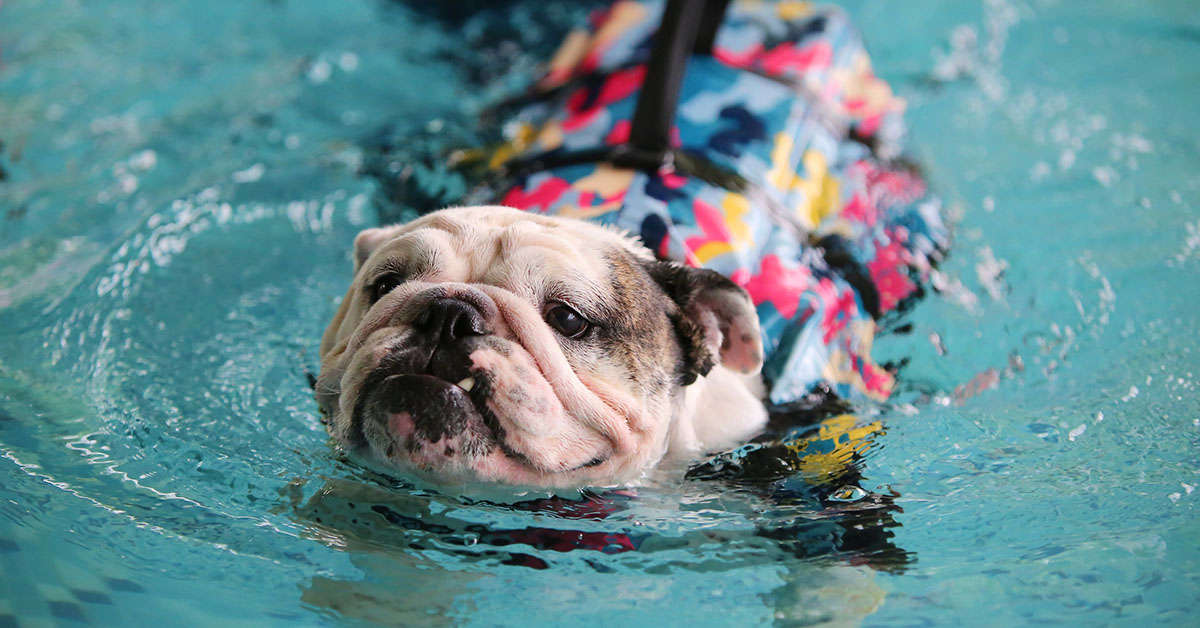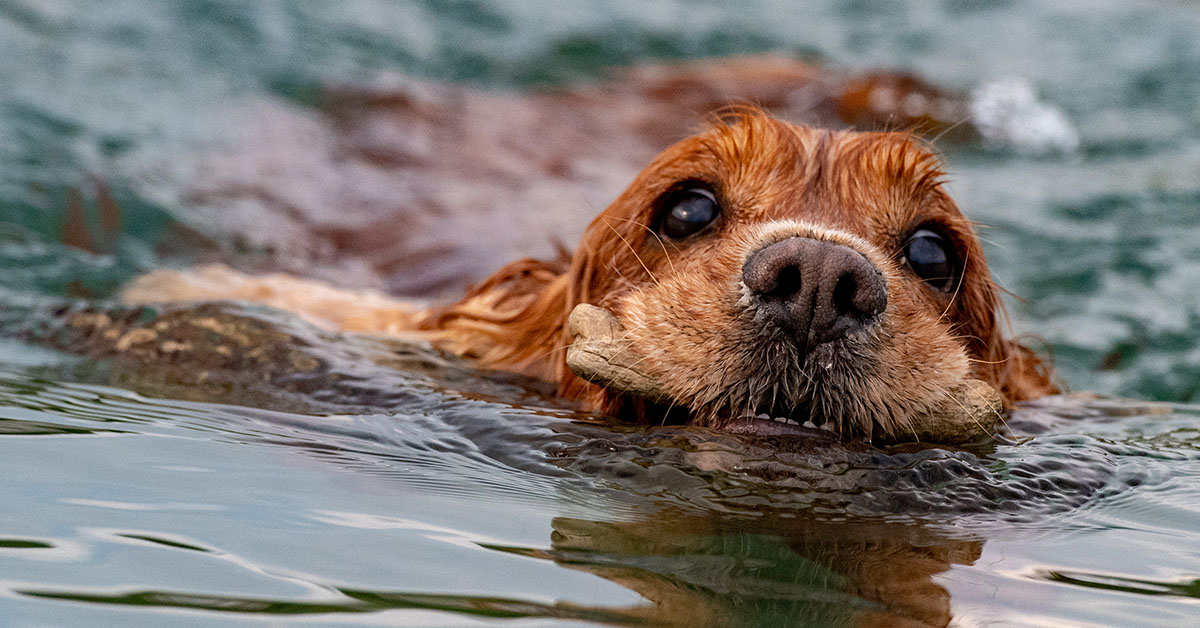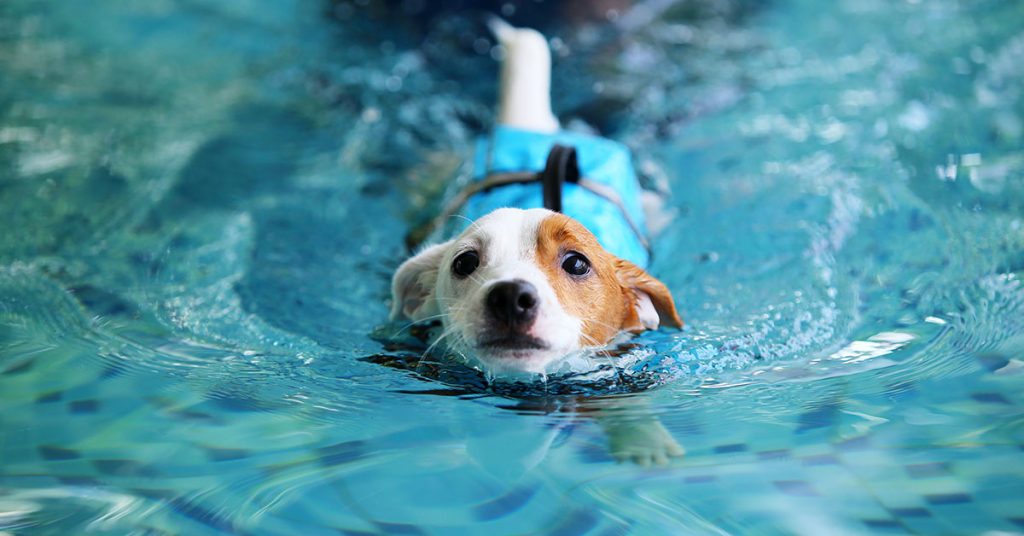Can dogs swim in pools? It’s a common question among pet owners, especially as pool season approaches. Even though dogs are naturally good swimmers, there are some things to keep in mind to keep them safe and healthy.
Throughout this blog post, we’ll explore how dogs can swim in pools and what factors determine whether they can. We will provide you with valuable insights to help you make informed decisions about introducing your dog to the pool. Let’s dive in.
Can Dogs Swim in Pools?

Evolution and physiological adaptations have endowed dogs with an innate ability to swim. Although not all dogs are great swimmers, many breeds have instincts that make them good at dealing with water. This ability traces back to their ancestors, whether it was for hunting, crossing bodies of water, or simply cooling off in the hot climate.
Breed plays an essential role in a dog’s swimming proficiency. Retrievers, Spaniels, and Labradors are renowned for their affinity for water and are considered natural swimmers. Their webbed feet, muscular build, and water-resistant coats make them great swimmers. However, individual dogs in any breed may have varying swimming abilities and comfort levels in the water.
Knowing your dog’s instincts around water can help you gauge their pool readiness. Although some dogs may dive right in without hesitation, others may need a little more encouragement and support.
Safety Tips for Dog Pool Time
Swimming can be fun for dogs, but it’s important to ensure their safety around pools. This requires careful planning.
Supervision
Don’t leave your dog unattended around a pool, even if they’re an experienced swimmer. Accidents can happen quickly, and constant supervision is crucial to prevent drownings. If your dog is unfamiliar with the pool environment or is new to swimming, keep an eye on their movements.
Pool Barriers
Install secure barriers, such as fences or gates, around the pool area to prevent unsupervised access. The barriers can help your dog stay safe and provide peace of mind when you are not around to watch over them.
Life Jackets

Consider getting a canine life jacket, especially if your dog doesn’t swim well or has trouble staying upright. A life jacket gives your dog buoyancy and support so they can enjoy the water safely.
Pool Covers
If your dog enters the pool accidentally, make sure it is covered with a sturdy pool cover. Make sure the cover is securely fastened and can support your dog’s weight to avoid accidents.
Pool Exits
Show your dog where the steps or ramps are so they can exit the pool safely. Make sure they use these exits consistently and practice exit drills to reinforce them.
With these safety precautions, you can make your dog’s pool time safe while minimizing the risk of accidents.
How to Train Your Dog to Swim
Teaching your dog to swim can strengthen your bond with him. If your dog is not a natural swimmer, gradually introduce him to the water and reinforce positive behavior.
Start Slow
Introduce your dog to shallow water where he can wade comfortably. Providing reassurance and encouragement along the way will allow them to explore at their own pace. You can gradually increase the depth of the water as your dog gets more comfortable.
Use Positive Reinforcement
Reward your dog for positive interactions with water with treats, praise, and affection. The positive association helps them build their confidence and reinforces desired behaviors.
Support with Flotation Devices
If your dog is hesitant to stay afloat, consider a canine flotation device or life jacket. These devices give your dog buoyancy and support so he can focus on swimming.
Offer Guidance and Support
Offer guidance and support to your dog during swimming sessions. Pushing them beyond their comfort zone can cause anxiety and erode their trust, so don’t force it.
Practice Regularly
Developing your dog’s swimming skills and water confidence requires consistent practice. Regular swimming sessions will keep your dog comfortable in different water environments.
Swimming Health Considerations for Dogs

Swimming can provide excellent exercise and mental stimulation for dogs but also poses potential health risks. Keep these health considerations in mind when swimming with your pet:
Chlorine Exposure
The chlorine in swimming pools maintains the water’s quality, but it can irritate your dog’s skin, eyes, and respiratory system. After swimming, clean your dog’s paws and underbelly with fresh water to remove chlorine residue.
Ear Infections
Dogs are prone to ear infections, especially after swimming. Water can get trapped in their ear canals, creating a warm, moist environment perfect for bacteria. If your dog swims, dry his ears thoroughly afterward and use a drying agent your vet recommends.
Ingestion of Pool Water
Pool water can upset your dog’s stomach and cause gastrointestinal problems. Drink fresh water before and after swimming to keep your dog from ingesting pool water. In addition, they should be discouraged from drinking directly from the pool.
Overexertion
It’s essential to monitor your dog’s activity level and prevent overexertion when swimming. If your dog is panting excessively or slowing down, give him frequent breaks to rest and recover.
Pool Hygiene
Keeping your pool clean and treating the water regularly will prevent algae and bacteria from growing. Check the pH and chlorine levels of the pool water regularly, and skim the surface for debris.
FAQs
Is it OK if my dog swims in the pool?
Pools are generally safe for dogs to swim in, but certain precautions should be taken. When your dog is new to swimming or unfamiliar with pools, always supervise them. Rinse your dog with fresh water after swimming to remove chlorine or other pool chemicals.
Dogs may need assistance learning to swim or using pool exits, so provide guidance and support. Swimming can be a fun and beneficial activity for your dog with the proper supervision and precautions.
Is chlorine water bad for dogs?
If dogs ingest chlorine water or are exposed to high concentrations for a long time, it can be harmful. Small amounts of chlorine from pools are generally safe, but ingestion can upset your dog’s stomach.
Rinse your dog after swimming with fresh water to remove chlorine residue and minimize risk. Observe any signs of irritation, such as redness or itching, and consult your veterinarian. With proper precautions, your dog can enjoy swimming in chlorinated water.
Is it safe to let your dog swim in the ocean?
Dogs can swim in the ocean, but they should be aware of potential dangers. Monitor water conditions, such as strong currents, waves, and tides, before taking your dog swimming. Look for marine life, sharp rocks, or debris that could pose a threat. Additionally, rinse your dog with fresh water after swimming to remove salt and sand, which irritate their skin.
Read More: Dog Skin Care: 7 Most Common Mistakes
The Takeaway
Can dogs swim in pools? It’s not just about whether they can swim but also about ensuring their safety and well-being. Many dogs are natural swimmers, but you should introduce them to pools gradually, provide proper training, and supervise them.
Your dog will enjoy pool time if you understand his instincts, address health concerns, and foster positive experiences. Your dog and you can enjoy swimming together with patience, preparation, and care.




